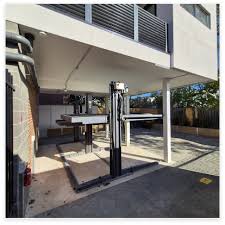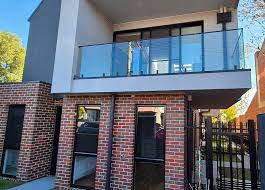31/08/2025

Discover the essence of design and craftsmanship through the project gallery prevailing homes, a curated collection that showcases completed builds, interior schemes, and exterior treatments that reflect contemporary trends and timeless detail. For a direct look at the source material and visual examples, visit project gallery prevailing homes https://www.prevailinghomes.com.au/project-gallery/ to explore high-resolution images and project descriptions that illustrate how concepts translate into living spaces.
The gallery functions as more than a portfolio; it is an educational tool for homeowners, designers, and builders who want to understand how materials, proportions, and site responses combine to create a coherent home. Each project is an invitation to study choices: the way natural light is harnessed, how outdoor areas connect to interiors, and how functional requirements shape aesthetic decisions. When you study multiple projects side by side, you begin to see recurring themes—open-plan living, seamless indoor-outdoor transitions, and thoughtful storage solutions—that define a prevailing homes approach.
Navigation and categorization are crucial for getting the most out of any project gallery. Prevailing homes typically organize projects by home type, size, and design style, allowing users to filter results based on their priorities: a compact family home, a luxury entertainer’s residence, or a coastal retreat with materials suited to salt air. Look for galleries that include floor plans, room-by-room photos, and close-ups of finishes. These details help you evaluate whether a design is adaptable to your block, budget, and lifestyle.
Material selection is prominently featured in many showcased projects. Tiles, timber, stone, and metal are presented in contextual settings that demonstrate scale and contrast. Pay attention to the way finishes are combined: a feature wall of textured tile paired with warm timber floors can ground a living space, while a monochrome palette with layered textures produces a modern, understated elegance. The gallery entries often note the brand or type of finish used, which can shorten the research time when you start sourcing materials for your own project.
Lighting strategy is another recurring element worth observing. Successful projects illustrate how natural and artificial light collaborate to enhance spatial qualities. South- or north-facing aspects, clerestory windows, and skylights are shown in photographs that capture the shifting moods throughout the day. Consider how window placement affects privacy and views, and whether the design uses deep eaves or louvres to control solar gain in warmer climates.
One of the most practical uses of a project gallery is idea translation. You can take a layout or a visual cue and repurpose it to fit your site. This might mean adopting a kitchen island configuration, modifying a master suite layout for better flow, or reinterpreting a façade treatment with locally available materials. A good gallery will include captions or short descriptions explaining the reasoning behind certain choices, which helps you understand design intent rather than merely copying visuals.
Budget transparency varies between galleries, but many projects offer ballpark cost indicators or notes on where savings were achieved. Look for commentary on value engineering—how higher-cost elements were balanced with economical choices elsewhere. This insight is valuable when you want to prioritize spending on impact features like quality joinery or energy-efficient systems, while economizing on less critical finishes.

Customization and flexibility are strong themes in prevailing homes’ projects. Many homeowners begin with a base plan and then adapt it to meet site constraints or personal preferences. Examples in the gallery demonstrate how a plan can expand horizontally to embrace a generous backyard, or stack vertically to maximize a constrained lot. When reviewing projects, think about how walls, windows, and service areas could be reconfigured without compromising structural logic.
Sustainability and energy efficiency are increasingly central to contemporary projects. The gallery entries often highlight passive design measures—orientation, cross-ventilation, high-performance glazing, and insulation—complemented by active systems like solar panels and efficient hot water services. These features not only reduce running costs but also improve comfort and resale appeal. If sustainability is a priority, filter gallery projects by those that explicitly note green certifications or energy-saving strategies.
Landscape integration is frequently underestimated, yet the gallery makes it easy to see how outdoor spaces are treated as extensions of the home. Hardscape choices, plant palettes, and constructed elements like pergolas or outdoor kitchens are shown in context, illustrating how cumulative decisions define the usable outdoor living experience. Consider how a garden room, alfresco area, or level lawn can influence the internal layout and flow.
Photography and storytelling are essential components of a useful project gallery. High-quality images allow you to appreciate texture and scale, while well-written descriptions explain constraints and opportunities encountered during the build. Seek galleries that provide a narrative: the client brief, the key challenges, the design response, and the outcomes. These stories are instructive and can build realistic expectations for your own process.
Testimonials and case studies add credibility to the visual content. When homeowners share their experience—how communication was handled, timelines were managed, and how on-site decisions were made—you gain trust in the builder’s capacity to deliver. These insights also highlight potential pitfalls, such as timing mismatches or decisions that led to unexpected costs, giving you ammunition to ask the right questions early in your own project.
Practical tips for using a project gallery effectively include creating a mood board, saving specific images with notes about what you like, and compiling questions for your designer or builder. Use the gallery as a conversation starter—bring images to consultations to communicate tastes and functional needs. Be realistic about differences in climate, site, and regulation that may necessitate adaptations.
In conclusion, the project gallery prevailing homes is a powerful resource for inspiration, technical learning, and practical planning. It helps prospective clients and design-minded homeowners visualize possibilities, understand material and budget implications, and identify the types of homes that align with their values. By studying multiple projects, focusing on the elements that matter most to you, and asking informed questions, you can leverage the gallery as a roadmap for a successful, well-considered build that reflects both aesthetic goals and everyday needs.